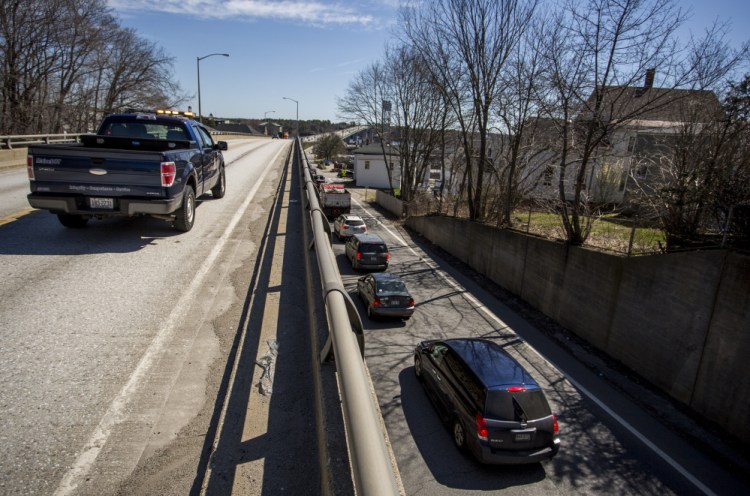The Democratic co-chair of the state’s Transportation Committee said Friday he was not surprised to learn that the Route 1 viaduct in Bath had not been fixed despite recent inspection reports indicating repairs were needed.
Rep. Andrew McLean, D-Gorham, said Maine has roughly 2,800 bridges and there is not nearly enough funding to address immediate transportation infrastructure needs.
“It doesn’t surprise me when something falls through the cracks,” McLean said. “In a sense, we’re playing with fire.”
The Portland Press Herald reported this week that the Maine Department of Transportation failed to repair guardrails on the 58-year-old Bath viaduct even after its own inspections called for repairs. The newspaper had questioned the viaduct’s viability after an SUV plunged off the span in early April and injured the driver, Melissa Medina, 37, and her 12-year-old son. Medina’s vehicle landed in the bed of a pickup truck below, likely cushioning the impact and perhaps saving their lives.
It’s not known whether a new guardrail would have prevented the accident, but McLean said it’s a reminder of the state’s uphill battle to keep roads and bridges maintained. As with most things in government, he said, funding is the critical issue.
“It’s about making sure government is doing one of its most basic functions,” he said.
Sen. Ronald Collins, R-Wells, the Transportation Committee’s other co-chair, said he heard about the newspaper’s findings but doesn’t fault MDOT.
“They stay on top of bridge safety,” he said. “That particular bridge had been inspected once a year and was due to be replaced.”
The Press Herald’s examination of the Bath viaduct found a number of missing bolts on the guardrail and damage to railing posts.
Collins didn’t disagree that the bridge needs repairs, but he said he’s not convinced a new guardrail would have made a difference in Medina’s case. Nevertheless, MDOT said Thursday that it would order a closer examination of the Bath viaduct railings and the roughly 30 other bridges in the state that share that railing design in light of the Press Herald investigation.
Rep. Jennifer DeChant, who represents the House district that includes Bath, said Friday that she had concerns about the bridge and had heard from some constituents as well.
“Folks I’ve talked to are alarmed to learn that the bridge may have been neglected,” she said. “We need to ask, what is the tipping point for public safety?”
DeChant said she plans next week to request more information from MDOT about the bridge and any planned repairs.
“That accident was a very close call. It could have ended a lot different,” she said. “I don’t want to wait for something else to happen. Everyone agrees that this bridge needs to be replaced, but how many other bridges are in the pipeline of being replaced? And will we get to them in time?”
Road and bridge repairs are always a source of debate at the State House but there is only so much money budgeted in any given year. McLean said lawmakers often pass bonds to fund projects, including a $100 million transportation bond that will go to voters in November, but said those bonds have been Band-Aids.
“We shouldn’t be using bond money to pay for basic maintenance,” he said. “A business doesn’t take out a loan to keep the lights on.”
A report issued last year by a national transportation trade group found that Maine had not made any significant progress toward replacing or repairing structurally deficient bridges in the past year.
TRIP, a Washington, D.C., nonprofit that analyzes the condition of bridges around the country, said 15 percent of Maine bridges are structurally deficient, a percentage unchanged from last year’s report. The group has advocated for doubling the $70 million allocated for bridge repairs within the MDOT budget.
The Bath viaduct was not included in that list of structurally deficient bridges.
Collins has not advocated for more transportation funding, but he said priorities are always changing.
McLean, however, said more policymakers need to view transportation infrastructure as a critical problem for the state.
“As a whole, there has not been a lot of interest in this subject,” he said. “A bridge crumbling somewhere is a worst-case scenario, but it’s not like it can’t happen. In fact, it has happened in other states.”
Send questions/comments to the editors.




Comments are no longer available on this story